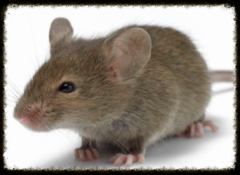The Mouse (rodent) House mouse, Mus domesticus
Depending on the level of the infestation and the species of rodent that is infesting a site control methods are as follows:
- Proofing measures for Mouse Control London to prevent entry-access cleanliness and hygiene practices at the site.
- Use of mechanical traps and or glueboards.
- Appropriate baiting programmes
- Monitoring programmes throughout the site to provide early rodent detection.
Effective Mouse Control involves cleanliness, mouse proofing and population reduction. The first 2 are useful as preventive measures. When a mouse infestation already exists, some form of population reduction is necessary. Reduction techniques include trapping and poisoning. Mice can survive in very small areas with limited amounts of food and shelter. No matter how good the cleanliness, most buildings in which food is stored, handled or used will support house mice if not mouse-proofed.
Although good cleanliness will rarely get rid of mice, poor cleanliness is sure to attract them and will allow them to flourish in larger numbers. Good cleanliness will also reduce food and shelter for existing mice and in turn make baits and traps more effective for Mouse Control . Particular attention should be made to eliminate places where mice can find shelter. If they have a small number of places to hide rest or build nests and raise young, they cannot survive in large numbers.
Signs of Mice for Mouse Control
- Holes
- Gnaw marks
- Droppings
- Runs
- Smear marks
- Urine pillars
- Nests
- Damaged goods
Baiting Techniques for Mouse Control
The house mouse is extremely well adapted for living in homes, food establishments and other structures. Homeowners are especially likely to become aware of mice during winter, following their fall migration indoors in search of warmth, food and shelter. Once mice become established inside a home, they can be very hard to control. Although most people believe mice less offensive than rats, mice are more common and cause considerably more damage.
Mice are prolific breeders, producing six to ten litters continuously throughout the year. The greatest economic loss from mice is not due to how much they eat, it’s what must be thrown because of damage or contamination. Food, books, clothing, wiring, furniture, and many other household items are contaminated by their droppings and urine, or damaged by their gnawing. House mice gnaw through electrical wiring causing fires and failure of freezers, computers and other appliances. Mice also can transmit diseases, particularly salmonellosis (bacterial food poisoning) when food is contaminated with infected rodent feces.
Mice are nocturnal creatures and are rarely seen by the homeowner. The most obvious indicators of their presence are droppings and sounds of them running, gnawing or squeaking and damage to stored food or materials for nesting. Inquisitive mice explore their territory daily, paying particular attention to new items or physical changes in their home range. Mice show no aversion to new objects like rats. Compared to rats, mice forage not far from their nest, typically not more than 10 to 25 feet. When food and shelter are adequate, their foraging may be only a few feet from their nest. For this reason, traps and other control devices must be positioned in areas where mouse activity is most evident. Mice have a preference to traveling adjacent to walls and other edges, another important point to remember when positioning control devices. Mice seem to prefer cereal grains or seeds in their feeding. They are erratic in their feeding, mainly when there are many food sources available. In situations like this, mice may make 10 to 25 visits to different food sites each night, taking as little as 0.15 grams of food from each site. Sites may vary from night to night, but certain sites where the mouse feels safe are nightly favorites. When food sources are limited, mice may visit the source 200 or more times per night, but only 20 milligrams may be taken during each visit. In all, the average mouse will consume only 3 to 4 grams of food per night.
Description of Mouse
|
Colour |
Brown to grey with a lighter underside |
|
Ears |
Large |
|
Eyes |
Small |
|
Tail |
Slightly less than body length |
|
Weight (adult) |
10 – 25 g |
|
Litters per year |
5 – 8 |
|
Litter size |
4 – 8 |
|
Maturity |
6 – 8 weeks |
|
Average life span |
3 – 4 months |
Food Premises
In very sensitive areas indicator blocks (non-toxic blocks) can be used within tamper-resistant bait stations. Internal bait points should be kept to a minimum and reduced once a Mouse infestation in London has been cleared. Fixings to walls and floors are desirable and far safer in production areas.
Away from production areas, boiler rooms, false roofs, etc, are high risk and should be baited. Perimeter baits, if appropriate for the location, should be established. These should be of a fixed tamper-resistant type to give the highest level of protection to the bait and increase the chances of Mouse Control.
Site locations will merit detailed reporting systems to include bait plans, COSHH assessments, monitoring reports, and hygiene, housekeeping and proofing recommendations.

